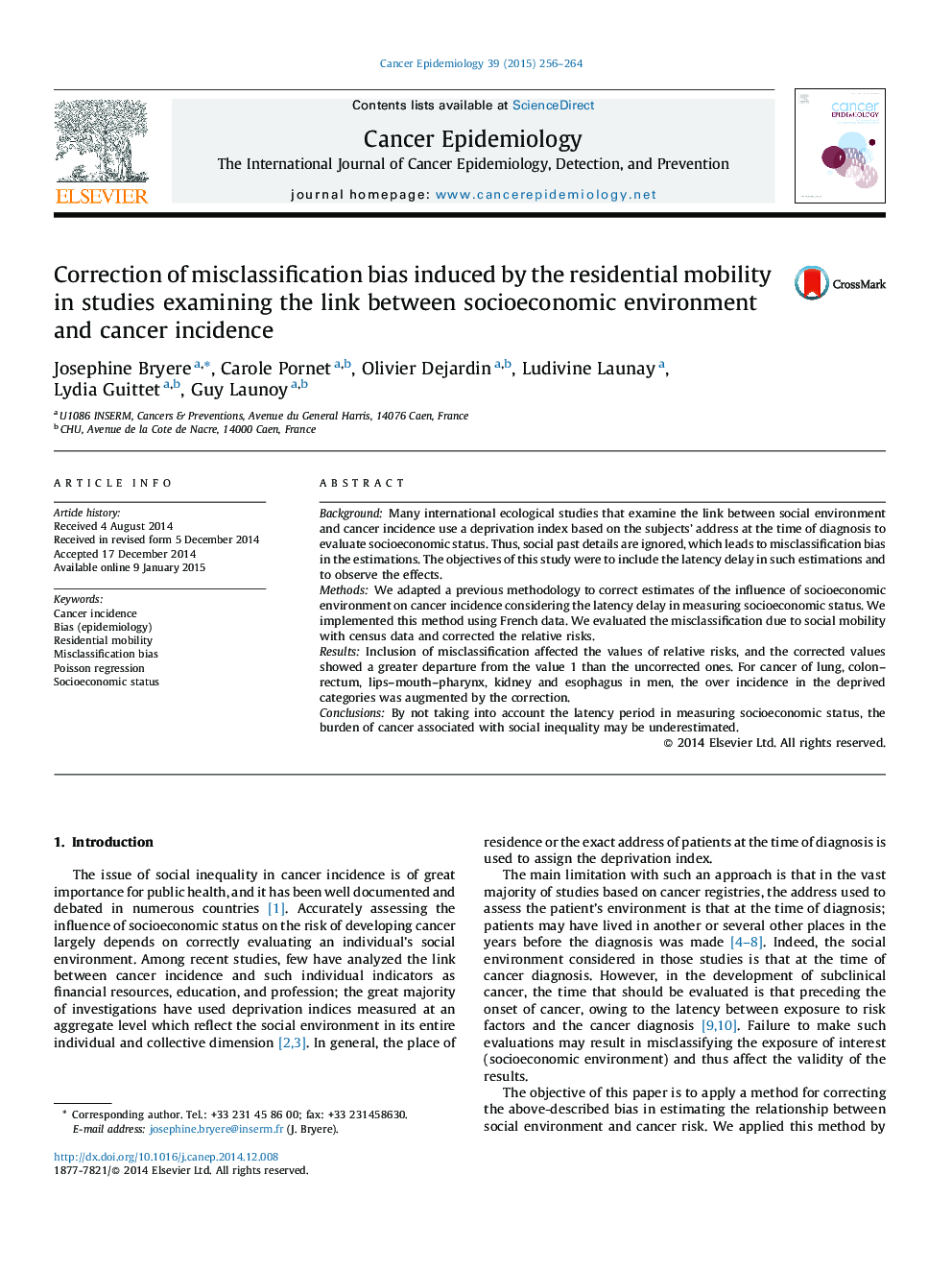| Article ID | Journal | Published Year | Pages | File Type |
|---|---|---|---|---|
| 2108898 | Cancer Epidemiology | 2015 | 9 Pages |
•Inclusion of the mobility in the estimation of the link between social status and cancer incidence.•Estimation of the proportion of the study population misclassified because of mobility.•Highlighting that ignore mobility may underestimate the effect of social status on cancer incidence.
BackgroundMany international ecological studies that examine the link between social environment and cancer incidence use a deprivation index based on the subjects’ address at the time of diagnosis to evaluate socioeconomic status. Thus, social past details are ignored, which leads to misclassification bias in the estimations. The objectives of this study were to include the latency delay in such estimations and to observe the effects.MethodsWe adapted a previous methodology to correct estimates of the influence of socioeconomic environment on cancer incidence considering the latency delay in measuring socioeconomic status. We implemented this method using French data. We evaluated the misclassification due to social mobility with census data and corrected the relative risks.ResultsInclusion of misclassification affected the values of relative risks, and the corrected values showed a greater departure from the value 1 than the uncorrected ones. For cancer of lung, colon–rectum, lips–mouth–pharynx, kidney and esophagus in men, the over incidence in the deprived categories was augmented by the correction.ConclusionsBy not taking into account the latency period in measuring socioeconomic status, the burden of cancer associated with social inequality may be underestimated.
